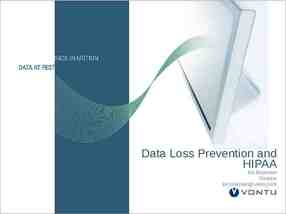TeamSTEPPS for Code Blue Teams: Piloting SBAR & CUS for
42 Slides760.86 KB

TeamSTEPPS for Code Blue Teams: Piloting SBAR & CUS for Interprofessional Team Education April 8, 2015

TeamSTEPPS for Code Blue Teams TeamSTEPPS Rules of Engagement Audio for the webinar can be accessed in two ways: 1. Through the phone (*Please mute your computer speakers) 2. Through your computer A Q&A session will be held at the end of the presentation Written questions are encouraged throughout the presentation and will be answered during the Q&A session To submit a question, type it into the Chat Area and send it at any time during the presentation The lines may open for call-in questions during the Q&A session Mod 1Slide 05.2 2 Page 2 TEAMSTEPPS 05.2

TeamSTEPPS for Code Blue Teams TeamSTEPPS Acknowledgements Project Sponsors Jim Battles, PhD (AHRQ) Heidi King, MS (DoD) Project Team Mod 1Slide 05.2 3 Page 3 Health Research & Educational Trust (HRET) Barb Edson (Project Director) Chris Hund (Project Manager) IMPAQ International David Baker (Team Lead) TEAMSTEPPS 05.2

TeamSTEPPS for Code Blue Teams TeamSTEPPS TeamSTEPPS Master Training Two-day training course Train-the-trainer approach Prepares you to serve as a TeamSTEPPS Master Trainer by Providing instruction on TeamSTEPPS tools and strategies Providing an opportunity to develop and plan your TeamSTEPPS implementation Prepares you to serve as a leader for implementing TeamSTEPPS within your organization Mod 1Slide 05.2 4 Page 4 TEAMSTEPPS 05.2

TeamSTEPPS for Code Blue Teams TeamSTEPPS Upcoming TeamSTEPPS Events Monthly Webinars Scheduled through September 2015 Topics, speakers, and registration information will be posted on the portal Register now for the May webinar: I-PASS: Integrating High Quality Handoffs into TeamSTEPPS and Hospital Care Master Training Courses Registration available for courses through August 2015 Online Course Availability Not able to travel? TeamSTEPPS 2.0 Online Master Trainer Course now available Mod 1Slide 05.2 5 Page 5 Register and enroll at: https://tslms.org TEAMSTEPPS 05.2

TeamSTEPPS for Code Blue Teams TeamSTEPPS Upcoming TeamSTEPPS Events (Cont’d) Annual Conference June 16-18, 2015 Denver, Colorado at the Westin Downtown Denver Learn more and register for all events at www.TeamSTEPPSportal.org Mod 1Slide 05.2 6 Page 6 TEAMSTEPPS 05.2

TeamSTEPPS for Code Blue Teams TeamSTEPPS Help Line (312) 422-2609 Or email: [email protected] Mod 1Slide 05.2 7 Page 7 TEAMSTEPPS 05.2

TeamSTEPPS for Code Blue Teams TeamSTEPPS Today’s Presenters Ken Miller, RN, MSN, CCRN Simulation Education Program Coordinator Department of Nursing Practice, Research, and Education Edward Lee, MD Assistant Clinical Professor, Hospitalist Section UCLA Department of Internal Medicine Chair, Code Blue QI Committee Mod 1Slide 05.2 8 Page 8 TEAMSTEPPS 05.2

TeamSTEPPS for Code Blue Teams TeamSTEPPS Objectives Provide an overview of Code Blue teams and interprofessional team education at UCLA Describe the identification of the need for TeamSTEPPS tools among code blue team members Describe how interprofessional code team training and TeamSTEPPS tools are being implemented Present data measuring the effectiveness of the intervention Mod 1Slide 05.2 9 Page 9 TEAMSTEPPS 05.2

TeamSTEPPS for Code Blue Teams TeamSTEPPS Code Blue Team Overview Ronald Reagan UCLA Medical Center Level I Trauma Center 520 Acute inpatient beds 6 different intensive care units (ICU) Teaching hospital with 76 ACGME accredited programs and over 1000 physician trainees Tertiary/quaternary referral center High volume transplant center Mod Slide 1 05.2 10 Page 10 TEAMSTEPPS 05.2

TeamSTEPPS for Code Blue Teams TeamSTEPPS Code Blue Team Overview Code Blue Team Composition Medical ICU Resident and Intern Coronary Care Unit Resident and Intern Anesthesia Senior Resident Critical Care Transport RN Pharmacist Respiratory Therapist EMT/Escort Security, Chaplain, Bed Control *Nurses from the affected unit Mod Slide 1 05.2 11 Page 11 TEAMSTEPPS 05.2

TeamSTEPPS for Code Blue Teams TeamSTEPPS In-Situ Education 3-Minute Mock Codes Emphasis on the first three minutes of a code Objectives include the development of: Leadership Skills Role Designation SBAR Communication Early and High Quality Compressions Mod Slide 1 05.2 12 Page 12 TEAMSTEPPS 05.2

TeamSTEPPS for Code Blue Teams TeamSTEPPS Interprofessional Education (IPE) August 2012 – Begin advanced simulation training for internal medicine junior and senior residents. Sessions scheduled “just in time” prior to residents being on the code pager. January 2013 – Sessions become interprofessional with med/surg nurses, ICU nurses, and critical care transport nurses. July 2014 – Department of Anesthesia commits residents to the IPE sessions. Mod Slide 1 05.2 13 Page 13 TEAMSTEPPS 05.2

TeamSTEPPS for Code Blue Teams TeamSTEPPS Interprofessional Education (IPE) 2013-2014 – 13 sessions 2014-2015 – 20 sessions 2015-2016 – Anticipated 25 sessions Mod Slide 1 05.2 14 Page 14 TEAMSTEPPS 05.2

TeamSTEPPS for Code Blue Teams TeamSTEPPS Interprofessional Education (IPE) 3 Cases per Session (1/2 day) Intracranial hemorrhage Cardiogenic shock Advanced arrhythmia GI Bleed Status Asthmaticus Sepsis Dual patient triage scenario Debriefing after each case Mod Slide 1 05.2 15 Page 15 Teamwork and communication Medical decision making TEAMSTEPPS 05.2

TeamSTEPPS for Code Blue Teams TeamSTEPPS Identifying Areas for Improvement Sources of information Personal experience in codes at UCLA Informal survey of healthcare providers about issues related to teamwork and communication Quality improvement committee reviews Data from event reports Observation of teams during IPE sessions Mod Slide 1 05.2 16 Page 16 TEAMSTEPPS 05.2

TeamSTEPPS for Code Blue Teams TeamSTEPPS Identifying Areas for Improvement Four Items Identified Issue Intervention Key information not effectively shared Team members not speaking up when problems are noticed Orders not heard/completed Team not “on the same page” Mod Slide 1 05.2 17 Page 17 TEAMSTEPPS 05.2

TeamSTEPPS for Code Blue Teams TeamSTEPPS Identifying Areas for Improvement UCLA became a TeamSTEPPS training center in early 2013, practically coinciding with the start of IP Code Team training TeamSTEPPS provided the mental framework and vocabulary to better understand teamwork, helping us to more effectively train our providers Mod Slide 1 05.2 18 Page 18 TEAMSTEPPS 05.2

TeamSTEPPS for Code Blue Teams TeamSTEPPS Identifying Areas for Improvement Four Items Identified Issue Intervention Effective Communication SBAR Advocacy and Assertion CUS, Assertive Statement Verify and Validate Information Exchange Closed-Loop Communication Shared Mental Model Using the Huddle Mod Slide 1 05.2 19 Page 19 TEAMSTEPPS 05.2

TeamSTEPPS for Code Blue Teams TeamSTEPPS SBAR Examples of the Problem Code Team did not hear from primary MD that a patient with an intracranial bleed was taking Coumadin. Mod Slide 1 05.2 20 Page 20 Primary MD did not feel comfortable with information relayed by nurse, leading to a delay in management of septic patient. TEAMSTEPPS 05.2

TeamSTEPPS for Code Blue Teams TeamSTEPPS SBAR Poor communication noted during nurse-to- primary MD communication and during primary MD-to-Code Blue Team communication Intervention – SBAR Situation―What is going on with the patient? Background―What is the clinical background or context? Assessment―What do I think the problem is? Recommendation―What would I recommend? Mod Slide 1 05.2 21 Page 21 TEAMSTEPPS 05.2

TeamSTEPPS for Code Blue Teams TeamSTEPPS Assertive Statement, CUS Examples of the Problem While waiting for norepinephrine drip to be prepared, the anesthesia resident fails to suggest bolusing pressors despite having drugs available. Mod Slide 1 05.2 22 Page 22 Team leader reads EKG as non-STEMI. Another team member clearly sees that the EKG shows a STEMI, but fails to speak up. TEAMSTEPPS 05.2

TeamSTEPPS for Code Blue Teams TeamSTEPPS Assertive Statement, CUS Failure to “speak up” when mistakes or delays in care were noticed by a team member CUS Creating a culture of collaboration Mod Slide 1 05.2 23 Page 23 Concern Uncomfortable Safety issue Team training facilitates the notion that all team members are important and have contributions to make TEAMSTEPPS 05.2

TeamSTEPPS for Code Blue Teams TeamSTEPPS Closed Loop Communication Examples of the Problem Vitamin K is ordered by MD, but is not clearly communicated to anyone, resulting in the drug not being given to the patient. Mod Slide 1 05.2 24 Page 24 Arterial blood gas ordered by MD, but nobody took responsibility thus the blood was not sent. This was only realized when results were later requested, only to discover that the ABG was never done. TEAMSTEPPS 05.2

TeamSTEPPS for Code Blue Teams TeamSTEPPS Closed-Loop Communication Communication, particularly orders, often not clearly directed Closed-Loop Communication Mod Slide 1 05.2 25 Page 25 TEAMSTEPPS 05.2

TeamSTEPPS for Code Blue Teams TeamSTEPPS Huddle – Shared Mental Model Examples of the Problem Providers physically segregate based on specialty Mod Slide 1 05.2 26 Page 26 Providers cognitively segregate based on tasks (Ex – airway team only communicating with each other) Anesthesia resident nearly gives succinylcholine for induction because he was not aware that the team was considering increased intracranial pressure TEAMSTEPPS 05.2

TeamSTEPPS for Code Blue Teams TeamSTEPPS Huddle – Shared Mental Model Teams tend to self-segregate into groups (silos) resulting in poor communication between providers Huddle Mod Slide 1 05.2 27 Page 27 Brief, ad-hoc “meeting” to regain situation awareness and bring everyone back to a shared mental model Effective for discussing critical events/actions Breaks down silos by encouraging cross communication TEAMSTEPPS 05.2

TeamSTEPPS for Code Blue Teams TeamSTEPPS Implementation Team training works, but only if you do it!! Get institutional buy-in Identify champions from each provider group Train the trainers Motivate providers to participate A simulation center is helpful, but not required! Mod Slide 1 05.2 28 Page 28 TEAMSTEPPS 05.2

TeamSTEPPS for Code Blue Teams TeamSTEPPS Implementation Get institutional buy-in Patient outcomes Financial considerations (risk management) Reportable data Educational needs of training programs Mod Slide 1 05.2 29 Page 29 TEAMSTEPPS 05.2

TeamSTEPPS for Code Blue Teams TeamSTEPPS Implementation Identify champions from each provider group Understanding of politics/motivations Understanding of schedules, practical barriers Understanding of areas for improvement Important for curriculum design to ensure that key competencies are being addressed Mod Slide 1 05.2 30 Page 30 TEAMSTEPPS 05.2

TeamSTEPPS for Code Blue Teams TeamSTEPPS Implementation Train the trainers All instructors take a 2-day simulation instructor course Most instructors have participated in a TeamSTEPPS course Structured debriefing is used by all instructors and addresses teamwork/communication first Model behaviors – describe and demonstrate the skills Mod Slide 1 05.2 31 Page 31 TEAMSTEPPS 05.2

TeamSTEPPS for Code Blue Teams TeamSTEPPS Implementation Motivate providers to participate Mandatory Offer CME or CE credits Show outside data – Everyone wants to improve Pilot in certain areas then show gains to more resistant areas to get buy-in Peer pressure/Word of mouth Mod Slide 1 05.2 32 Page 32 TEAMSTEPPS 05.2

TeamSTEPPS for Code Blue Teams TeamSTEPPS Barriers Encountered Time (participants and instructors) Support from institution Participation from some groups Scaling to the entire health system Mod Slide 1 05.2 33 Page 33 TEAMSTEPPS 05.2

TeamSTEPPS for Code Blue Teams TeamSTEPPS Measuring Progress 2012 – Began collecting data on teamwork and communication using 5 questions included on our event reporting system Mod Slide 1 05.2 34 Page 34 Was a code leader clearly evident throughout the code? Was information consistently shared among team members? Were the workload and tasks appropriately distributed between team members? Did team members communicate effectively with one another? Rate the overall teamwork during the code. TEAMSTEPPS 05.2

TeamSTEPPS for Code Blue Teams TeamSTEPPS Measuring Progress Limitations Not a validated questionnaire Event reports on codes are completed by nurses Subjective rating scale Bias – nurse who completes the report was also present during the resuscitation Positive response – defined as an answer of 4 or 5 on 1-5 scale or “Yes” to Yes/No questions Mod Slide 1 05.2 35 Page 35 TEAMSTEPPS 05.2

TeamSTEPPS for Code Blue Teams TeamSTEPPS Measuring Progress Mod Slide 1 05.2 36 Page 36 TEAMSTEPPS 05.2

TeamSTEPPS for Code Blue Teams TeamSTEPPS Measuring Progress What about patient outcomes? Caveat - Many quality improvement projects related to resuscitation were initiated between 2012 to current Mod Slide 1 05.2 37 Page 37 TEAMSTEPPS 05.2

TeamSTEPPS for Code Blue Teams TeamSTEPPS Measuring Progress Mod Slide 1 05.2 38 Page 38 TEAMSTEPPS 05.2

TeamSTEPPS for Code Blue Teams TeamSTEPPS Summary Interprofessional team training is an important part of Code Blue Team performance TeamSTEPPS concepts are effective at teaching teamwork skills and creating a culture of mutual support Pick specific skills to emphasize that are relevant to your Code Blue Teams – We emphasize SBAR, CUS, Closed-Loop Communication, and Huddles Barriers to progress exist, but can be overcome! Mod Slide 1 05.2 39 Page 39 TEAMSTEPPS 05.2

TeamSTEPPS for Code Blue Teams TeamSTEPPS Summary In hospital cardiac arrest outcomes can be improved!!!! Mod Slide 1 05.2 40 Page 40 TEAMSTEPPS 05.2

TeamSTEPPS for Code Blue Teams TeamSTEPPS Questions and Answers Mod Slide 1 05.2 41 Page 41 TEAMSTEPPS 05.2

TeamSTEPPS for Code Blue Teams TeamSTEPPS Thank You! For more information, please contact our team at: [email protected] Mod Slide 1 05.2 42 Page 42 TEAMSTEPPS 05.2






